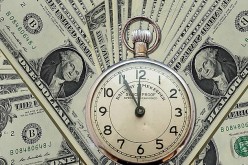The good news is that your home holds numerous opportunities to reduce expenses without sacrificing comfort or quality of life.
Small, strategic adjustments to how you manage energy consumption, water usage, food purchases, and other household costs can free up significant money each month—money that can fuel your savings goals and investment dreams.
Many families discover they can save $200 to $500 monthly through simple home cost savings strategies. These aren’t drastic lifestyle changes that require major sacrifices. Instead, they’re thoughtful optimizations that often improve your home’s efficiency while putting more money back in your pocket.
Let’s explore practical ways to transform your home into a money-saving powerhouse, creating the financial breathing room you need to build wealth and secure your future.
Energy Consumption: Your Home’s Biggest Money Drain
Energy costs represent one of the largest controllable expenses for most households, typically accounting for 10-15% of monthly budgets according to the U.S. Energy Information Administration. Small changes in how you consume energy can produce substantial savings that compound over time.
-
Evaluate Your Lighting Strategy
Traditional incandescent bulbs consume significantly more electricity than LED alternatives while generating excess heat that forces your cooling system to work harder. LED bulbs use approximately 75% less energy and last 25 times longer than incandescent lighting, according to the Department of Energy.
Replace your five most frequently used light bulbs with LED versions first, focusing on areas like kitchens, living rooms, and bedrooms where lights stay on for extended periods. The initial investment typically pays for itself within three to six months through reduced electricity bills.
Consider installing dimmer switches and timers to further optimize lighting usage. These simple additions allow you to customize light levels based on actual needs while automatically turning off lights in unoccupied rooms.
-
Smart Appliance Management
Electronic devices continue drawing power even when turned off, a phenomenon called "phantom load" or "vampire power." The Lawrence Berkeley National Laboratory estimates that phantom loads account for 5-10% of residential electricity consumption.
Unplug chargers, coffee makers, televisions, and computer equipment when not actively in use. Power strips make this process convenient—simply flip one switch to cut power to multiple devices simultaneously.
Adjust your water heater temperature to 120 degrees Fahrenheit instead of the standard 140-degree setting. This simple change reduces energy consumption without affecting comfort while preventing scalding accidents.
-
Heating and Cooling Optimization
Your HVAC system likely represents your home’s largest energy expense. Strategic thermostat management can reduce heating and cooling costs by 10-20% annually without compromising comfort.
Set your thermostat 7-10 degrees lower in winter and higher in summer when you’re sleeping or away from home. Programmable or smart thermostats automate these adjustments, ensuring optimal efficiency without requiring constant manual changes.
Clean or replace HVAC filters monthly during peak usage seasons. Dirty filters force systems to work harder, increasing energy consumption and potentially shortening equipment lifespan.
Water Usage: Stop Money From Going Down the Drain
Water costs continue rising nationwide, making efficient usage increasingly important for household budgets. The Environmental Protection Agency reports that American families waste approximately 180 gallons weekly through household leaks alone.
-
Identify and Repair Leaks Promptly
Check for running toilets by adding food coloring to toilet tanks. If color appears in the bowl without flushing, your toilet has a leak that could waste hundreds of gallons monthly. Most toilet leaks require simple, inexpensive repairs like replacing the flapper or adjusting the chain length.
Inspect faucets throughout your home for drips or slow leaks. A single dripping faucet can waste over 3,000 gallons annually—enough to take more than 180 showers according to the EPA.
Monitor your water meter before and after a two-hour period when no water is used. If the meter reading changes, you likely have a leak requiring professional attention.
-
Install Efficient Fixtures
Low-flow showerheads and faucet aerators reduce water consumption without noticeably affecting water pressure. These inexpensive devices can cut water usage by 30-50% while maintaining comfortable flow rates.
Consider replacing older toilets with EPA WaterSense certified models that use 1.28 gallons per flush or less compared to older models using 3-7 gallons per flush. The potential water savings often justify replacement costs within two to three years.
-
Develop Water-Conscious Habits
Limit shower time to five minutes or less. Installing a shower timer helps track usage and build awareness of water consumption patterns. Shorter showers can save 12,500 gallons annually for a family of four.
Run dishwashers and washing machines only with full loads, and select appropriate water levels for smaller loads when necessary. Fix the habit of running water while brushing teeth, washing dishes, or performing other tasks that don’t require continuous flow.
Food and Groceries: Nourish Your Family and Your Savings
Food represents the third-largest expense category for most households after housing and transportation. The USDA estimates that families waste 30-40% of food purchases, representing hundreds of dollars monthly that could strengthen your financial foundation.
-
Strategic Meal Planning
Create weekly meal plans before grocery shopping to avoid impulse purchases and ensure you buy only necessary items. Review your calendar to account for nights when you’ll eat out or have leftovers, preventing overbuying.
Plan meals around sales and seasonal produce to maximize value while enjoying fresh, flavorful ingredients. Keep a master list of your family’s favorite meals to streamline planning and prevent the decision fatigue that often leads to expensive convenience choices.
Designate one night weekly for "leftover night" to ensure previously cooked food gets consumed before spoiling. This strategy reduces waste while providing easy meal solutions for busy evenings.
-
Reduce Food Waste Through Better Storage
Learn proper storage techniques for different produce types. Potatoes, onions, and garlic prefer cool, dark places but shouldn’t be refrigerated. Most vegetables maintain freshness longer in refrigerator crisper drawers, while fruits like bananas, tomatoes, and avocados ripen best at room temperature.
Freeze excess produce before it spoils. Overripe bananas make excellent smoothie ingredients, while vegetables approaching expiration can be chopped and frozen for future soups, stews, or stir-fries.
Implement first-in, first-out rotation for pantry items, ensuring older products get used before newer purchases. Label items with purchase or expiration dates to maintain awareness of what needs consuming soon.
-
Smart Shopping Strategies
Compare unit prices rather than package prices to identify genuine bargains. Sometimes smaller packages offer better value per ounce or pound than bulk options, especially for items your family won’t consume quickly.
Shop with a list and stick to it, avoiding aisles that don’t contain items you need. Grocery stores strategically place high-margin impulse items at eye level and near checkout areas.
Consider store brands for basic items like rice, pasta, canned vegetables, and cleaning supplies. Generic versions often provide identical quality at 20-40% lower prices than name brands.
Transportation: Move Efficiently and Economically
Transportation costs extend far beyond gas prices, encompassing maintenance, insurance, depreciation, and opportunity costs of time spent traveling. Strategic transportation management can free up hundreds of dollars monthly for savings and investments.
-
Optimize Trip Planning
Combine multiple errands into single trips to reduce fuel consumption and vehicle wear. Plan routes efficiently to minimize backtracking and unnecessary mileage.
Consider walking or biking for nearby errands when weather and safety permit. These alternatives provide exercise benefits while eliminating vehicle costs entirely for short trips.
Schedule regular activities like grocery shopping, library visits, and appointments on the same day each week to establish efficient routines and reduce total travel time.
-
Explore Alternative Transportation
Research public transportation options in your area, including buses, trains, and ride-sharing services. For occasional longer trips, public transport often costs less than driving when you factor in gas, parking, and vehicle wear.
Investigate carpooling opportunities with neighbors, coworkers, or friends for regular trips like work commutes or children’s activities. Sharing transportation costs benefits everyone involved while reducing traffic and environmental impact.
Consider whether your family truly needs multiple vehicles. Some households discover they can eliminate one car payment, insurance policy, and maintenance expense by sharing one reliable vehicle and using alternatives for specific situations.
-
Maintain Vehicles for Maximum Efficiency
Keep tires properly inflated to improve fuel efficiency and extend tire life. Under-inflated tires can reduce gas mileage by up to 3% according to the Department of Energy.
Follow recommended maintenance schedules for oil changes, air filter replacements, and other routine services. Well-maintained vehicles operate more efficiently and experience fewer costly breakdowns.
Remove unnecessary weight from vehicles, including roof racks when not in use. Every 100 pounds of excess weight reduces fuel efficiency by approximately 1-2%.
Transform Your Approach to Household Savings
The strategies outlined above represent just the beginning of your home cost savings journey. Start by implementing two or three changes that seem most manageable for your situation, then gradually expand your money-saving efforts as these become habitual.
Track your monthly savings to maintain motivation and identify which strategies provide the greatest return on your time and effort. Many families find that their initial savings motivate them to discover additional opportunities throughout their homes.
other related articles of interest:
Navigating Future Education Costs: State 529 Plans and Alternative Investments
Cut Costs, Not Nutrition: Smart Ways to Save Money on Food for Your Family
Remember that every dollar saved through reduced home expenses is a dollar that can grow through savings accounts, retirement contributions, or other investments. Small changes compound over time, creating significant financial improvements that support your long-term wealth-building goals.
Your home should be a sanctuary that nurtures both your family’s comfort and financial security. These practical adjustments help you achieve both objectives, creating the foundation for a more prosperous future.
| Category | Strategy | Potential Monthly Savings | Implementation Difficulty |
|---|---|---|---|
| Energy Consumption | Switch to LED bulbs | $15-30 | Easy |
| Energy Consumption | Unplug phantom load devices | $10-25 | Easy |
| Energy Consumption | Thermostat optimization | $30-75 | Easy |
| Water Usage | Fix leaks and install efficient fixtures | $20-50 | Moderate |
| Water Usage | Shorter showers and conscious habits | $15-35 | Easy |
| Food and Groceries | Meal planning and waste reduction | $100-200 | Moderate |
| Food and Groceries | Smart shopping strategies | $50-100 | Easy |
| Transportation | Combined trips and alternatives | $40-80 | Easy |
| Transportation | Vehicle maintenance optimization | $25-60 | Moderate |
| Total Potential Savings | Combined Strategies | $305-655 | Varies |
Image Credit: home cost savings by envato.com
end of post … please share it!
end of post idea for home improvement
view and analyze home improvement ideas at our LetsRenovate center
Helpful article? Leave us a quick comment below.
And please give this article a rating and/or share it within your social networks.













